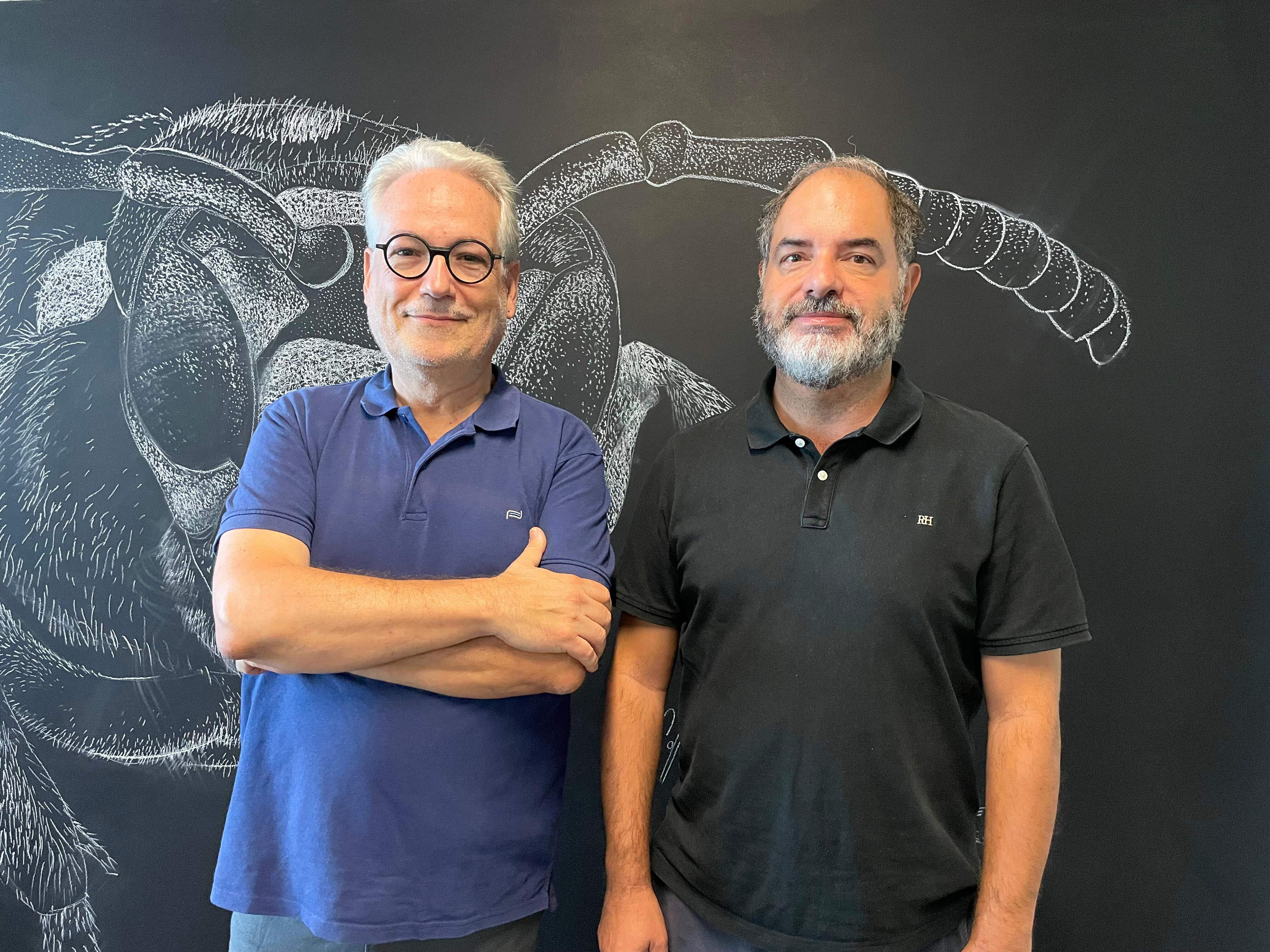Users
Social media
- More details here...
- Address
Parc Científic de la Universitat de València C/
Catedrático Agustín Escardino, 9
46980 Paterna (Valencia) Spain - Email:
iu.i2sysbio@uv.es - Phone:
(+34) 963544810
- Address
Links
I2SysBio researchers propose a new strategy to bridge the gap between the origin of life and the metabolism of the universal common ancestor

Investigation
I2SysBio researchers propose a new strategy to bridge the gap between the origin of life and the metabolism of the universal common ancestor
- Researchers at I2SysBio (CSIC-UV) propose applying metabolic techniques to trace life on Earth, from its emergence to the Last Universal Common Ancestor (LUCA), the common ancestor of all living beings.
- The study suggests that generative metabolism, which analyses the metabolic reactions that form complex molecules in an organism, can be traced back to the reactions that occurred on early Earth.
Juli Peretó and Pablo Carbonell, researchers at the Institute of Integrative Systems Biology (I2SysBio), a joint centre of the University of Valencia (UV) and the Spanish National Research Council (CSIC), propose a strategy for tracing back from the last universal common ancestor (LUCA) to the origin of life. The research, published today in Philosophical Transactions, the journal of the British Royal Society, employs the strategy of generative metabolism, a synthetic biology methodology that uses artificial intelligence algorithms to extrapolate LUCA's metabolic capabilities back in time.
Genetics has the ability to travel back in time through the study and comparison of genomes. The more similar the genomes of two species are, the more recent their last common ancestor (LCA) will be; and the more different they are, the older their LCA will be. Over the years, more and more genomes have been sequenced, which decades ago led to the concept of LUCA (Last Universal Common Ancestor), an organism that represents the ancestor of all living beings, from the smallest bacteria to large mammals. According to the latest research, LUCA appeared about 4.2 billion years ago, and given that the Earth was formed approximately 4.6 billion years ago, it is assumed that the origin of life took place in the 400 million years between those two dates.
In fact, one of the classic problems in studying the early evolution of life is determining how the transition occurred from prebiotic chemistry (before the emergence of life), on a planet very different from today's, to the most primitive metabolisms that made the evolution of the first microorganisms possible. Until now, the combination of bottom-up (from chemistry to biology) and top-down (from current metabolic diversity to LUCA) approaches has not succeeded in bridging the gap between the prebiotic world and LUCA.
However, the authors of the study, Pablo Carbonell, a research scientist at the CSIC, and Juli Peretó, professor of Biochemistry and Molecular Biology at the UV, point out that ‘the evolution of enzymes can be traced through the tree of life to LUCA and the ancestral genes that LUCA possibly had and their corresponding groups of encoded reactions can be mapped’.
To explore the time between the origin of life and LUCA, the study uses generative metabolism, a process that consists of creating the complex structures of an organism from simpler precursor molecules. In the case of organisms from the past, for which we have no fossils to study, this method acts as a molecular detective, allowing us to trace primitive life forms. ‘Generative metabolism has a proven track record, evident in the fields of synthetic biology and metabolic engineering,’ Carbonell points out. On the other hand, ‘the novelty is that these techniques can be applied to one of the great unresolved problems of the early evolution of life: how LUCA's complex metabolism emerged,’ adds Peretó.
To this end, the new study argues that generative metabolism models, based on a set of reaction rules, open up a promising avenue for exploring the evolution of enzymes (proteins that catalyse biological reactions) within an extended metabolic space. This environment, in which an organism's metabolic reactions take place, i.e., the chemical processes that occur within cells to sustain life, includes both the metabolic reactions we know today and hypothetical reactions under certain environmental conditions. ‘By understanding this full range of possible reactions, we can make more detailed hypotheses about the origins of life,’ the researchers point out.
According to the authors, methodologies derived from generative metabolism suggest that the groups of metabolic reactions we know today can be traced back to the set of prebiotic reactions that occurred on the primordial Earth, associated with the beginnings of biological evolution.
The article is part of a special issue of the journal PTRS, dedicated to the topic ‘Origins of life: the possible and the actual’, which includes some of the papers presented at a symposium held at the Santa Fe Institute and coordinated by Ricard Solé (ICREA, Institute of Evolutionary Biology CSIC-UPF), Chris Kempes (Santa Fe Institute) and Susan Stepney (University of York).
Carbonell P., Peretó J. Before LUCA: unearthing the chemical roots of metabolism. Philosophical Transactions. DOI 10.1098/rstb.2024.0292


